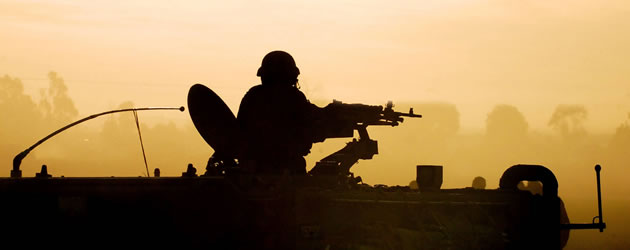The Euro (EUR) exchange rate has been hit by many different crises over the last few years; we’ve had the Greek crisis, Euro crisis, the global recession, and now a Greek debt crisis is dominating the headlines. Yet it is another crisis, that has the potential to dwarf them all still that lingers in the background and that is a full scale invasion of Ukraine by Russia.
Last year the currency was also weakened over concerns over the revolution in Ukraine which led to the nation effectively splitting in two as Ukrainians in the west wanted closer ties to the European Union and West and those in the East wanting to remain close to Russia.
A Russian annexing of Crimea and civil war quickly followed, and as the situation got worse rumours circulated that Russian troops were aiding the pro-Russian rebels.
Moscow of course denies aiding the rebels but according to NATO Russian armour and personnel have slipped over the Russian Ukrainian border numerous times.
Investor Worries to Weigh On Euro (EUR) Exchange Rate
A tentative ceasefire was hashed out between the rebels and the Kiev based government in Minsk in February, but that appears to have ended in abject failure as heavy fighting has continued over the past few months.
Now, fears are building, that economic sanctions imposed by the west on Russia and tumbling oil prices could lead to Moscow getting involved head on in the conflict raging in Ukraine.
Ukraine’s President, Petro Poroshenko told MPs that the nation’s military must be prepared to defend against a full-scale Russian invasion.
Despite the ceasefire officially holding, violence in the east of the country has surged and observers have reported a large amount of heavy weapons being moved towards the front lines.
‘The military must be ready as much for a renewal of an offensive by the enemy in the Donbass as they are for a full-scale invasion along the whole length of the border with Russia. We must be truly ready for this. We must be really prepared for this,’ said Mr Poroshenko.
On Wednesday tank battles raged in two areas west of the often fought over Donetsk region. 24 people were reported to have been killed in the clashes.
Baltic States Preparing
Russia has denied having any involvement in the conflict despite numerous reports of Russian artillery being fired into the country and several Russian soldiers being captured. If the ceasefire collapses fully and all out war does erupt the markets are expected to react negatively. The standoff between the West and Russia has led to relations between the two sides deteriorating to their worst levels since the Cold War.
“The Ukrainian side has taken steps to aggravate tensions many times in the past in the run up to some major international events. This used to happen and we are seriously concerned now over the most recent manifestation of such activity,” Dmitry Peskov, Vladimir Putin’s spokesman said on Thursday.
In the unlikely event that Russia does launch a full-scale invasion, the world is watching to see what the EU, US and NATO response will be. The use of military action by the West could lead to a widening of the conflict. The worst case scenario would of course be open warfare between Russia and NATO.
Such a conflict could be devastating and heavily impact upon European nations such as Latvia, Estonia and Lithuania. They are small, geographically isolated from the rest of the EU, and have Russian-speaking minorities, which President Vladimir Putin declared last year gives Moscow the right to intervene with military force.
The imposition of more sanctions is most likely to be the response.



